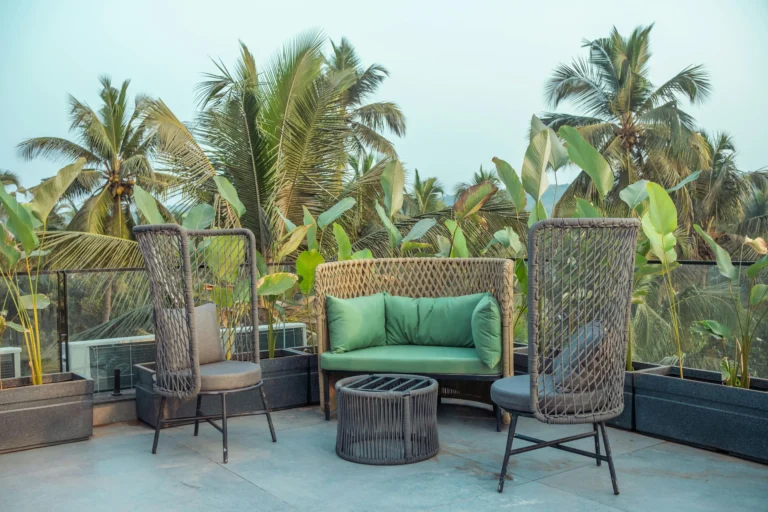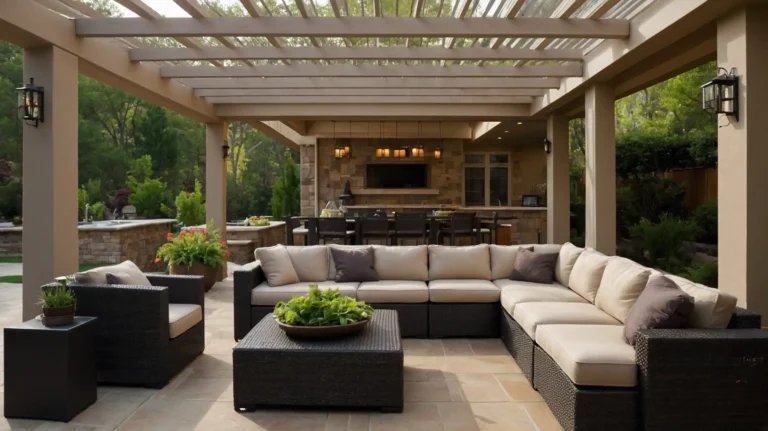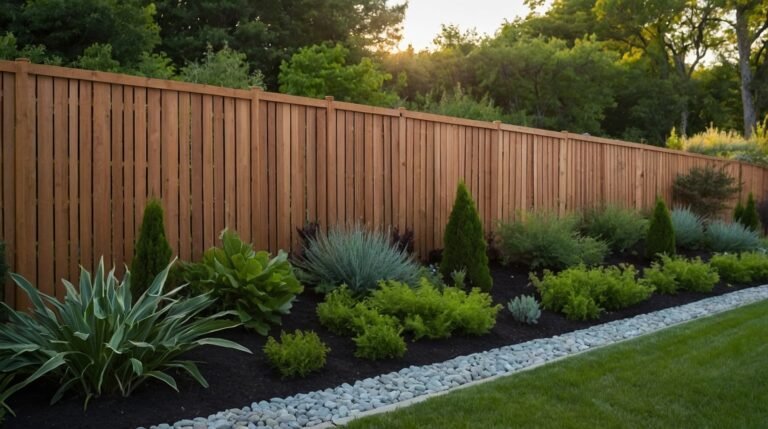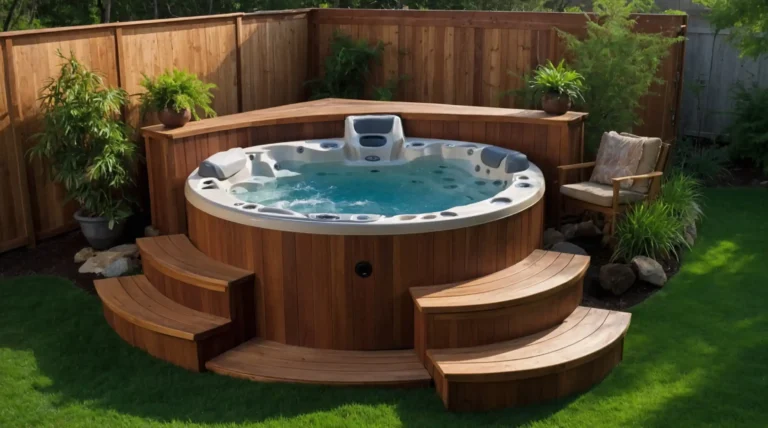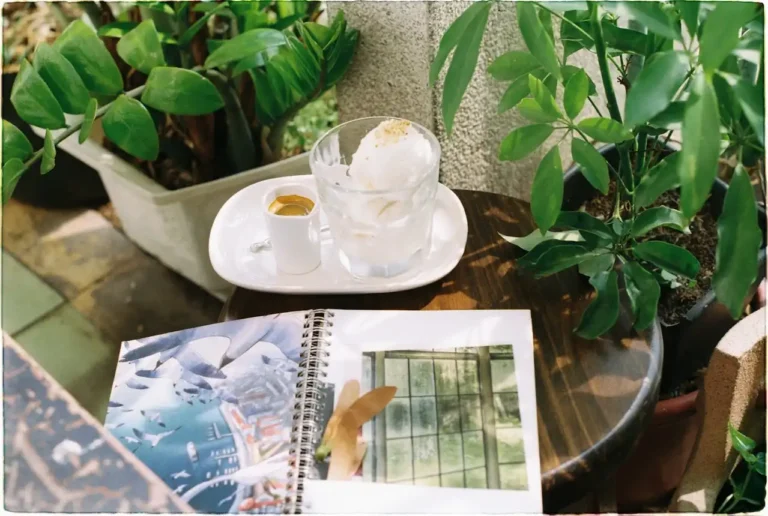27 Space-Maximizing Small Garden Ideas That Will Transform Your Tiny Outdoor Space
Don’t let limited space stop you from creating the garden of your dreams.
Whether you have a small balcony, a tiny patio, or a postage-stamp yard, there are countless ways to maximize your outdoor space.
With creativity and smart planning, even the smallest areas can become lush, productive green spaces that bring joy and relaxation to your life.
Small gardens present unique design opportunities that can result in charming, efficient spaces with big impact.
Let’s explore some innovative ideas to help you make the most of your compact garden.
1: Vertical Garden Walls

Transform blank walls and fences into thriving gardens by installing vertical planters.
These space-saving systems allow you to grow herbs, flowers, and even vegetables without taking up precious floor space.
Consider using pocket planters, trellises, or specialized vertical garden kits. For a budget option, repurpose pallets or create your own wall-mounted containers.
2: Hanging Basket Clusters

Create visual interest above your garden by hanging multiple baskets at varying heights.
This draws the eye upward and adds dimension to your space without cluttering ground level areas.
Choose trailing plants like ivy, fuchsia, or petunias for maximum impact. Mix and match different plants for year-round color and texture variation.
3: Container Garden Groupings

Arrange pots and containers in clusters rather than spreading them around.
This creates the illusion of a larger, more cohesive planting area while allowing you to move plants as needed for optimal sunlight.
Use containers of different heights and sizes but maintain a consistent color scheme for a polished look. Add casters to larger pots for easy mobility.
4: Tiered Planter Systems

Install stepped or cascading planters to maximize vertical space while creating visual interest.
These systems allow you to grow multiple plants in the footprint of just one container.
Look for ready-made tiered planters or create your own using stacked pots, repurposed ladders, or custom-built wooden structures.
This approach works especially well for herb gardens.
5: Living Privacy Screens

Replace bulky fences with slim trellises supporting climbing plants.
These natural dividers create privacy while adding greenery and taking up minimal ground space.
Try fast-growing options like jasmine, clematis, or ivy. For edible options, consider runner beans, peas, or grape vines that provide food along with coverage.
6: Espalier Fruit Trees

Train fruit trees to grow flat against walls using the ancient technique of espalier.
This space-saving method allows you to grow apples, pears, and other fruits in areas too small for traditional trees.
The horizontal branches not only save space but also improve fruit production and make harvesting easier. Start with dwarf varieties for best results.
7: Miniature Water Features

Add tranquility to your space with compact water features like tabletop fountains, wall-mounted water walls, or converted container ponds.
The sound of moving water creates a peaceful atmosphere and attracts beneficial wildlife.
Solar-powered options eliminate the need for electrical outlets and reduce energy costs.
8: Multipurpose Furniture

Invest in garden furniture that serves double duty, such as benches with hidden storage, tables with built-in planters, or ottoman seating that conceals garden tools.
This approach reduces clutter while providing both functional seating and practical storage solutions.
Look for weather-resistant materials that will stand up to outdoor conditions.
9: Folding and Wall-Mounted Elements

Install fold-down tables, wall-mounted seats, or collapsible planters that can be tucked away when not in use.
These space-saving solutions allow you to reconfigure your garden for different activities.
A fold-down table can transform your space from a garden retreat to an outdoor dining area in seconds.
10: Mirrored Accents

Use mirrors strategically to create the illusion of expanded space. Place them to reflect plantings, sky, or other attractive elements rather than blank walls or fences.
Weather-resistant or specially treated outdoor mirrors are available, or you can repurpose vintage mirrors with appropriate protective coatings.
Always secure them firmly for safety.
11: Smart Lighting Solutions

Install string lights, solar stake lights, or LED strip lighting to extend your garden’s usability into evening hours without taking up valuable floor space.
Lighting also creates ambiance and can make your small garden feel larger and more inviting.
Focus on highlighting garden features rather than flooding the entire space.
12: Multi-Season Planting Strategy

Carefully select plants that provide interest across multiple seasons, reducing the need for frequent replanting and maximizing your investment in each square foot.
Include plants with colorful foliage, interesting bark, and varying bloom times.
Evergreens provide structure year-round, while deciduous plants offer changing seasonal displays.
13: Espaliered Living Fences

Create boundaries using espalier techniques on shrubs and small trees to form living fences that take up minimal width while adding greenery and structure.
These slim green barriers offer privacy and define spaces without the bulkiness of traditional fencing.
Choose flowering or fruiting varieties for additional benefits.
14: Herb Spiral Gardens

Build a spiral-shaped raised bed that creates multiple microclimates in a small footprint, allowing you to grow diverse herbs with different sun and moisture needs together.
The higher portions drain well for Mediterranean herbs like rosemary and thyme, while lower areas retain moisture for herbs like mint and parsley.
This efficient design maximizes growing space.
15: Pocket Meadows

Create tiny wildflower areas that pack biodiversity into small spaces, supporting pollinators and bringing natural beauty to urban gardens.
Select native wildflower mixes appropriate for your region and growing conditions.
Even a square foot can support several species and create habitat for beneficial insects.
16: Stacked Stone Planters

Construct low-maintenance rock gardens or stacked stone planters that provide excellent drainage for succulents and alpine plants while adding architectural interest.
These structures can follow contours or create terraces in sloped gardens, maximizing otherwise difficult growing areas.
The stones also absorb heat, creating warm microclimates.
17: Underplanting Technique

Maximize growing space by layering plants—tall species in back, medium in middle, and ground covers below—to grow more in the same square footage.
This mimics natural plant communities and uses space more efficiently than single-level plantings.
It also reduces weeding as ground covers fill in empty spaces.
18: Window Box Extensions

Expand your growing area by installing window boxes not just under windows but along railings, wall tops, and edges of patios or decks.
These narrow planters can host flowers, herbs, or vegetables without encroaching on floor space.
Choose self-watering models to reduce maintenance requirements.
19: Circular Design Patterns

Arrange elements in circular rather than rectangular patterns to improve flow and create the illusion of more space in tight gardens.
Curved paths feel longer and more interesting than straight ones, making your garden seem larger.
Round planting beds also typically allow for more efficient plant spacing.
20: Living Table-scape

Create an edible centerpiece by growing lettuce, herbs, or flowers directly in a hollowed-out table or dedicated planter table on your patio.
This conversation-starting feature brings plants to eye level and makes harvesting easy.
Choose shallow-rooted plants that thrive in limited soil depth.
21: Movable Garden Elements

Mount small planters on castors or use lightweight containers that can be rearranged based on seasonal sun patterns or to accommodate gatherings.
This flexibility allows your garden to evolve with your needs and helps ensure plants receive optimal growing conditions throughout the year.
Label the bottoms to track which plants thrive where.
22: Space-Saving Composting

Implement bokashi composting or compact tumbler systems that fit in tiny spaces while still converting kitchen waste into valuable garden nutrients.
These space-efficient methods speed decomposition and reduce odors compared to traditional compost piles.
Some systems are attractive enough to keep on a balcony or patio.
23: Rainfall Catchment Integration

Install slim-profile rain barrels or hidden catchment systems that collect valuable rainwater without consuming usable garden space.
Look for designs that double as planters on top or that can be disguised as decorative elements.
Some modern systems can be integrated into walls or fences.
24: Rooftop Garden Potential

Turn flat roofs of sheds, garages, or extensions into planted areas, effectively doubling your garden space without expanding your footprint.
Green roofs provide insulation, absorb rainwater, and create new habitats.
Start with shallow-rooted, drought-tolerant plants like sedums that thrive in roof conditions.
25: Optical Illusion Pathways

Create winding or disappearing paths that trick the eye into perceiving greater depth and distance within your small garden space.
Use progressively smaller elements toward the end of the garden to enhance this effect.
Curving paths that disappear behind plantings suggest continuation beyond what’s visible.
26: Edible Landscapes in Disguise

Incorporate attractive edible plants throughout your ornamental garden, allowing you to grow food without dedicating separate space to a vegetable garden.
Rainbow chard, purple basil, and red-veined sorrel offer beautiful foliage while providing fresh produce.
Blueberry bushes provide spring flowers, summer fruit, and fall color.
27: Seasonal Rotation Planning

Develop a system for swapping plants seasonally in the same containers, maximizing year-round interest without expanding your footprint.
Map out succession planting schedules where spring bulbs give way to summer annuals, followed by fall chrysanthemums and winter evergreen arrangements, all in the same spaces.
Conclusion
Your small garden holds immense potential when approached creatively.
By implementing even a few of these ideas, you’ll transform your limited outdoor space into a verdant sanctuary that feels surprisingly spacious and brings daily joy.


